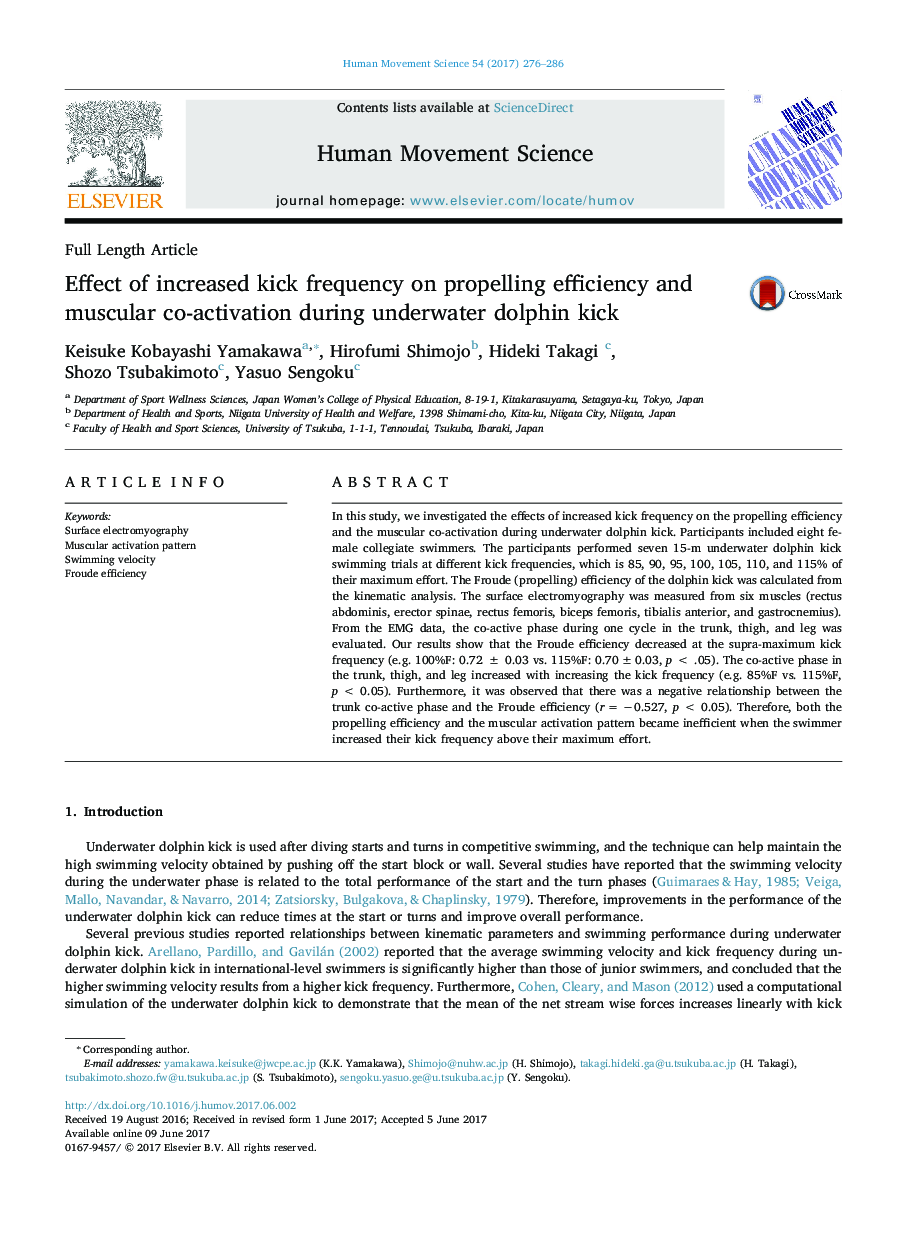| Article ID | Journal | Published Year | Pages | File Type |
|---|---|---|---|---|
| 5041987 | Human Movement Science | 2017 | 11 Pages |
â¢Swimmers performed dolphin kick swimming trials at different kick frequencies.â¢Surface electromyography of trunk, thigh, and leg muscles was performed.â¢Muscular co-activation phase increased with increasing kick frequency.â¢Increasing kick frequency affects propelling efficiency and muscular co-activation.â¢Reduced propelling efficiency correlated with co-activation phase increment change.
In this study, we investigated the effects of increased kick frequency on the propelling efficiency and the muscular co-activation during underwater dolphin kick. Participants included eight female collegiate swimmers. The participants performed seven 15-m underwater dolphin kick swimming trials at different kick frequencies, which is 85, 90, 95, 100, 105, 110, and 115% of their maximum effort. The Froude (propelling) efficiency of the dolphin kick was calculated from the kinematic analysis. The surface electromyography was measured from six muscles (rectus abdominis, erector spinae, rectus femoris, biceps femoris, tibialis anterior, and gastrocnemius). From the EMG data, the co-active phase during one cycle in the trunk, thigh, and leg was evaluated. Our results show that the Froude efficiency decreased at the supra-maximum kick frequency (e.g. 100%F: 0.72 ± 0.03 vs. 115%F: 0.70±0.03, p < .05). The co-active phase in the trunk, thigh, and leg increased with increasing the kick frequency (e.g. 85%F vs. 115%F, p < 0.05). Furthermore, it was observed that there was a negative relationship between the trunk co-active phase and the Froude efficiency (r = â0.527, p < 0.05). Therefore, both the propelling efficiency and the muscular activation pattern became inefficient when the swimmer increased their kick frequency above their maximum effort.
